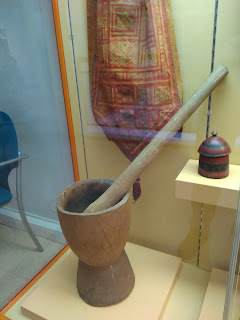As all human beings, I experience coincidences that might loosely fit under the term 'synchronicity', that elements that are thematically connected, or resemble each other, happen at the same time or to the same person without there being any causal connection between them. Mostly when this happens, I relish the coincidence and I find it very pleasing, and one such pleasing case came about during my current sojourn in Madrid.
By the time I am writing this, I am sitting in a small room in an apartment in Madrid, preparing for the next step of my journey and reflecting on the various experiences I have had in the past few days. In preparation for my holiday, I decided to bring something to read on the road, as it were, even though I already have ended up expanding my personal library with a few items - to say nothing of those that are likely to be added in the days ahead. The novel is the gut-wrenchingly beautiful By night the mountain burns by Juan Tomás Ávila Laurel, a writer from Equatorial Guinea, translated into English from Spanish by Jethro Soutar. The book is a novelised rendition of Ávila Laurel's experiences on the island of Annobón some distance from the Atlantic coast of Africa, and now belonging to Equatorial Guinea, which was a Spanish colony until 1963.
fredag 3. mai 2024
Synchronicity in Madrid - encountering Equatorial Guinea
I brought this novel with me for the simple reason that by the time of departure, I had not yet finished it, and I was stuck in a part of the novel that is particularly difficult to get through. However, I also thought that it was fitting to be reading a text written in Spanish, albeit in an English translation, when going to Spain. As it turned out, I would encounter several other aspects of life in Equatorial Guinea - albeit mainland Equatorial Guinea - and I did so when visiting the National Museum of Anthropology. This visit was not planned, because this museum is not widely known by tourists, and it was almost empty while I was there. It is a small museum, but full of very interesting materials collected from various parts of the world, including Equatorial Guinea. To me, it was particularly exciting, as well as quite touching, to be able to see something from the country of the book I was reading - even though I was also quite aware that the items in the museum are largely from the nineteenth century rather than the mid-twentieth century described by Ávila Laurel, and even though I was aware that the Fang culture of mainland Equatorial Guinea is very different from the culture of Annobón. The connection was nonetheless striking, and did help bring several aspects of Ávila Laurel's novel - above all the hardship and the various cultural codes that dictated parts of communal conduct - more vividly to life.
Bikuele, a form of currency in the Fang culture of Equatorial Guinea
Museo Nacional de Antropología, Madrid
Two types of bikuele, and a wooden seat
Museo Nacional de Antropología, Madrid
Fang headdress, collected in 1890-91
Museo Nacional de Antropología, Madrid
Bottle from the Fang culture, first half of the twentieth century
Museo Nacional de Antropología, Madrid
Wooden mortar, from the Fang culture
Museo Nacional de Antropología, Madrid
.jpg)





Ingen kommentarer:
Legg inn en kommentar